Healthy People 2020 discussion.docx/ DOWNLOAD TO SCORE A
Document Content and Description Below
Healthy People 2020 discussion.docx Evaluate the Healthy People 2020 goals and summarize two guidelines for health screenings or modifiable risk factors that can be recommended by the advanced prac... tice nurse. Healthy People 2020 provides 10-year, measurable public health objectives, as well as means to help trace progress toward achieving them. While there are many health objectives, I will address sleep disorders and diabetes. Sleep health is one of Healthy People 2020 topics, and the goal is to increase public awareness of the importance of sleep to maintain overall health, wellness, and productivity. Over 25% of the adults report inadequate sleep at least half the month. Adequate sleep is imperative to support sugar metabolism to prevent diabetes, perform well at work and school, and fight off infection (Healthy People, 2020b). The cumulative long-term effects of sleep deprivation and sleep disorders have been associated with a wide range of harmful health consequences, including an increased risk of hypertension, diabetes, obesity, depression, heart attack, and stroke. The Institute of Medicine (2006) Committee on Sleep Medicine and Research found health care providers do refer patients for sleep studies who may require a CPAP, but they do not educate on the importance of a good night's rest for overall health benefits. Healthy People 2020 goals for sleep health is to educate and promote strategies to prevent insomnia, restless leg syndrome, and sleep-disordered breathing, which includes sleep apnea. Patients untreated with a sleep disorder are 2-4 times more likely to have a heart attack or stroke (Healthy People, 2020b). Health care providers can provide education to the public to promote screening for sleep disorders. Diabetes affects about 29 million people in the United States and is the 7th leading cause of death. Diabetes increases the mortality rate and the risk for heart attack by 1.8 times, and it is the leading cause of kidney failure, lower-extremity amputations, and blindness (Healthy People, 2020a). Hospitals, clinics, and employers around the country promote health screenings for diabetes throughout the year. Health care providers can encourage diabetes prevention through regular health screenings and educate patients on the importance of making lifestyle changes. Lifestyle changes are proven effective in preventing or delaying the onset of type 2 diabetes in high-risk patients by losing weight and changing to a healthy diet (Healthy People, 2020a). References Healthy People. (2020a). Diabetes. Retrieved from https://www.healthypeople.gov/2020/topics-objectives/topic/diabetes Healthy People. (2020a). Sleep health. Retrieved from https://www.healthypeople.gov/2020/topics-objectives/topic/sleep-health Institute of Medicine. (2006). Sleep disorders and sleep deprivation: An unmet public health problem. Retrieved from https://pubmed.ncbi.nlm.nih.gov/20669438/ Thank you for your discussion post on colorectal cancer screening and childhood immunization. It is recommended to screen for colon cancer after the age of fifty to detect any polyps. Health care providers have been diligent in referring their patients for colonoscopies or other fecal screening. A mortality benefit has been confirmed in randomized clinical trials for guaiac-based fecal occult blood testing (gFOBT) and sigmoidoscopy (Doubeni, 2020). It is inferred for other screening tests based on observational studies and indirect comparison with studies of other screening strategies that have gone through randomized controlled trials (Doubeni, 2020). Screenings are done every ten years unless polyps are detected, and a first- degree relative was diagnosed with colon cancer. According to the US Preventive Services Task Force (USPSTF) and the American Cancer Society (ACS) being screened with a test acceptable to the patient is preferable to having the patient decline screening (Doubeni, 2020). It is vital to educate patients on the importance of colorectal screening and for practitioners to follow up with patients on preventive health screenings and to follow the recommended practice guidelines. Reference Doubeni, C. (2020). Screening for colorectal cancer: Strategies in patients at average risk Retrieved from https://www.uptodate.com/contents/screening-for-colorectal-cancer- strategies-in-patients-at-average-risk#:~:text=We%20continue%20to%20screen %20for,aged%2076%20to%2085%20years. The goal of Healthy People 2020 is to “achieve health equity, eliminate disparities and improve the health of all groups as measured by leading health indicators” (Edelman, p. 47, 2014). Annual wellness visits are covered by Medicare, which is new since Healthy People 2010. Included in the coverage for this visit is the identification of risk factors and the education and counseling services necessary to promote wellness. Reducing the proportion of adults who are obese is an objective set forth by Healthy People 2020 that can be supported by the advanced practice nurse. The prevalence of obesity has steadily increased in the United States since the 1960’s. The goal established by Healthy People 2020 was to reduce the percentage of obese adults from 33.9 to 30.5, unfortunately the most recent estimation reflects an increase to 38.6. Obesity is a covered preventive service for adults, and screening patients for obesity is recommended by the USPTF for adults with a BMI of 30 or more. Behavior based weight loss modifications/interventions are recommended, with evidence showing not only weight loss, but also reduced incidence of type 2 diabetes (USPSTF, 2019). These are both hot topics and affects millions of people worldwide. Mortality and morbidity rates associated with obesity have been prevalent in healthcare for centuries. Obesity is a disease that affects all ages groups across the continuum. Screening for obesity is recommended by the US Preventive Services Task Force (USPSTF) and the American Heart Association (AHA) to review the risk factors for diabetes, cardiovascular disease, and pulmonary diseases (Erlandson, Ivey, & Seikel, 2016). The USPSTF recommends anyone 18 years and older be screened for obesity, and anyone with a BMI >30 is offered behavioral interventions (Erlandson, Ivey, & Seikel, 2016). The clinical evidence supports a diet low in calories and high in fiber will lead to weight loss. The daily caloric goal should be 1,200 to 1,500 kcal for women and 1,500 to 1,800 kcal for men (Erlandson, Ivey, & Seikel, 2016). Weight loss is challenging for many, and support and guidance is needed for patients to be successful. Nurse practitioners are in a prime position to counsel and support patients and educate them on diseases associated with obesity. Reference Erlandson, M., Ivey, L.C. & Seikel, K. (2016). Update on office-based strategies for the management of obesity. Retrieved from https://www.aafp.org/afp/2016/0901/p361.html [Show More]
Last updated: 1 year ago
Preview 1 out of 5 pages
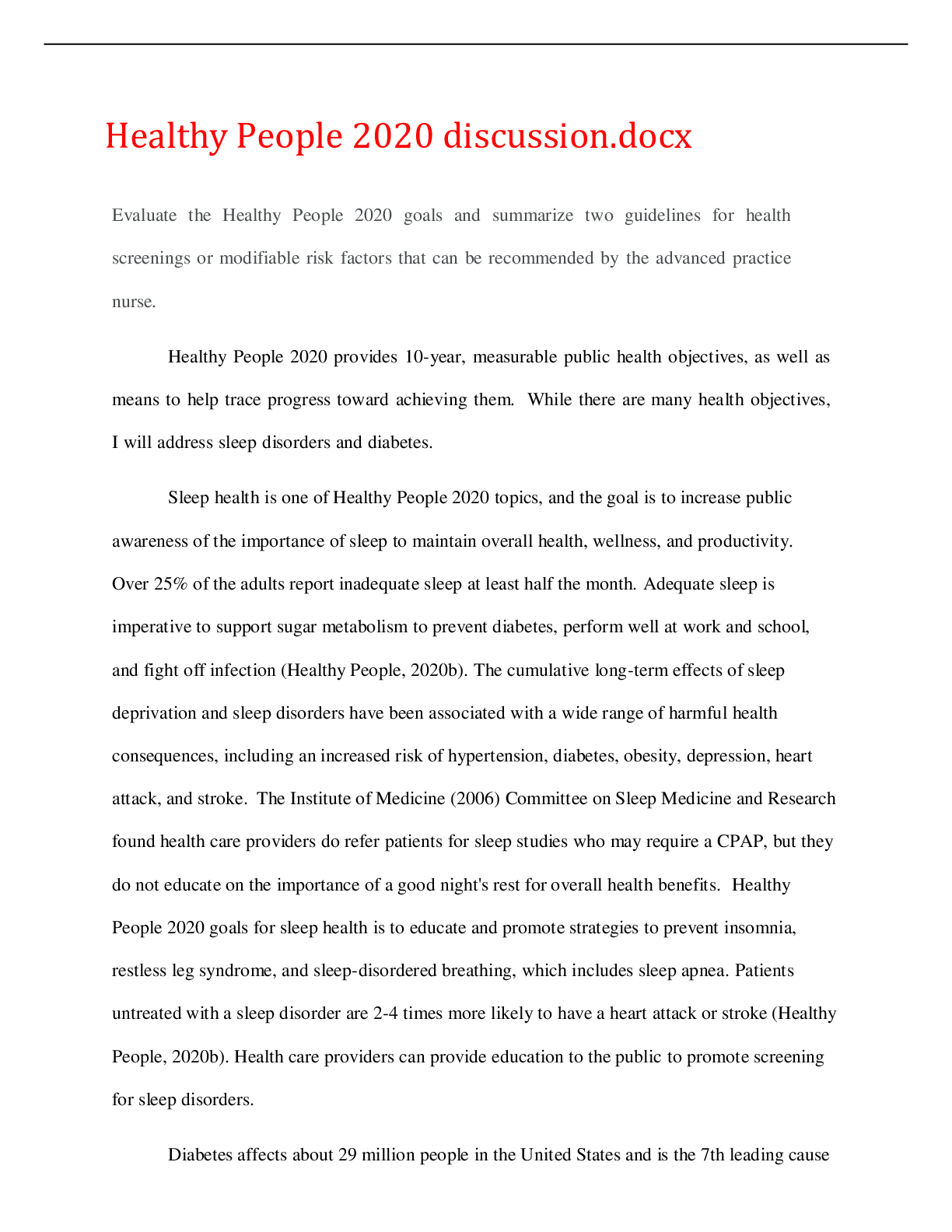
Reviews( 0 )
Document information
Connected school, study & course
About the document
Uploaded On
Jul 24, 2021
Number of pages
5
Written in
Additional information
This document has been written for:
Uploaded
Jul 24, 2021
Downloads
0
Views
32


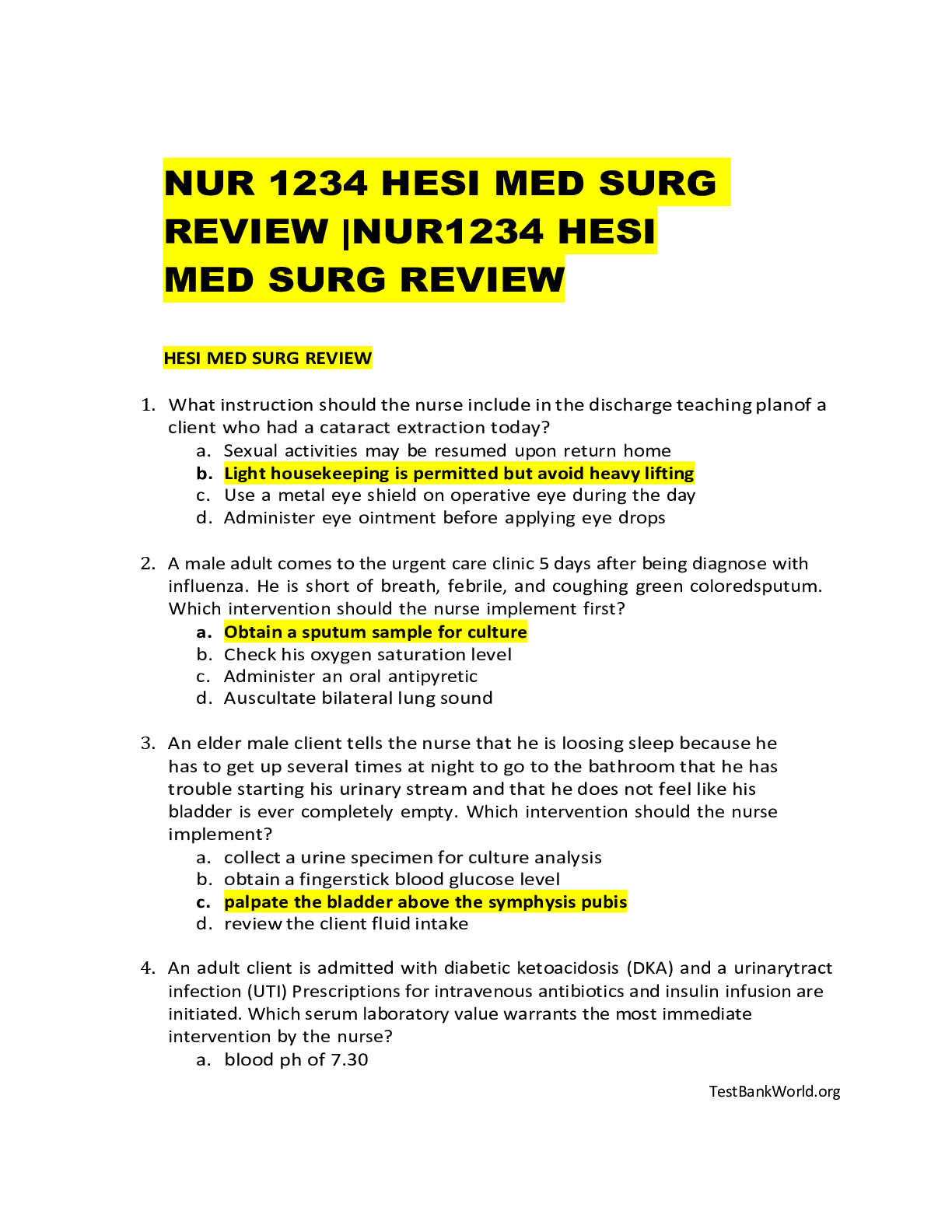
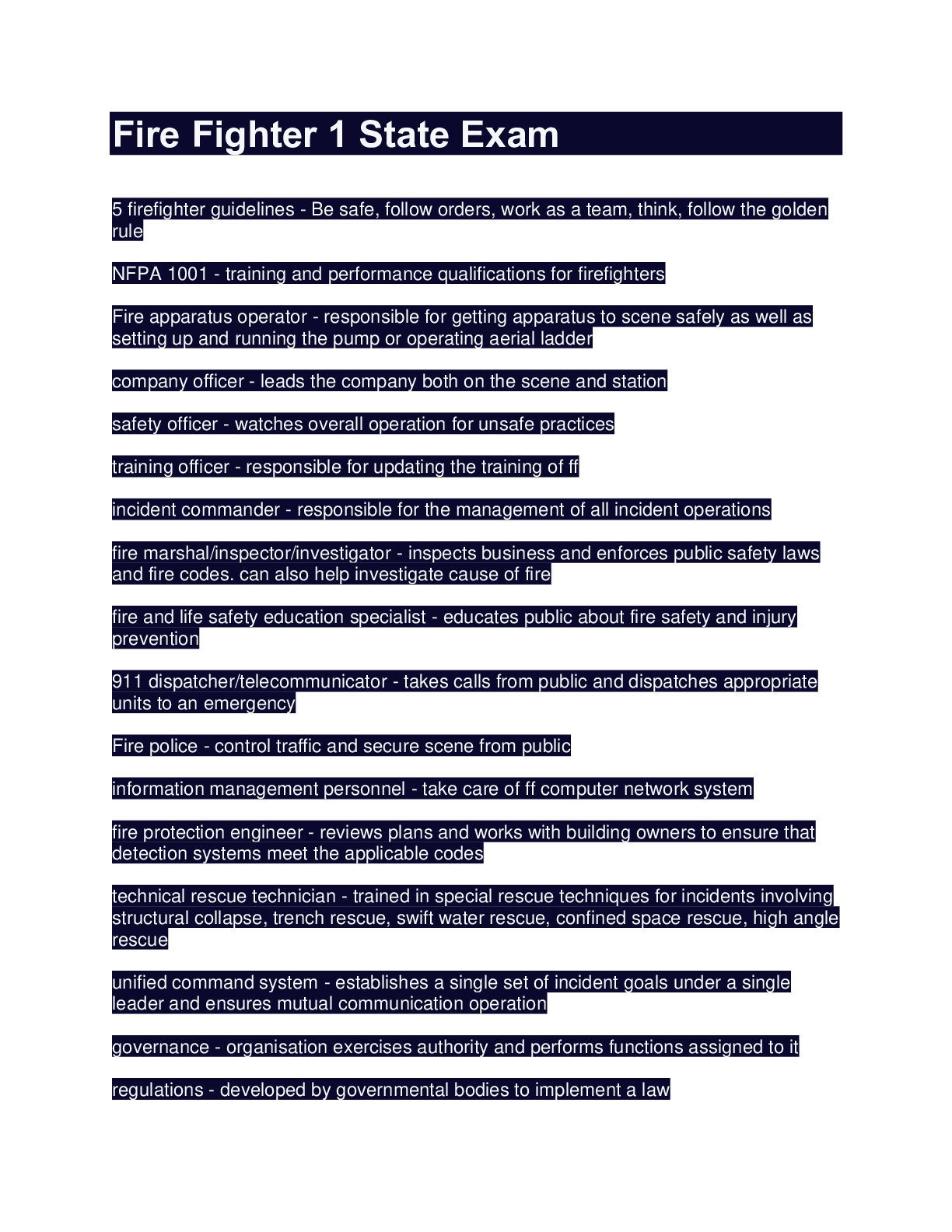




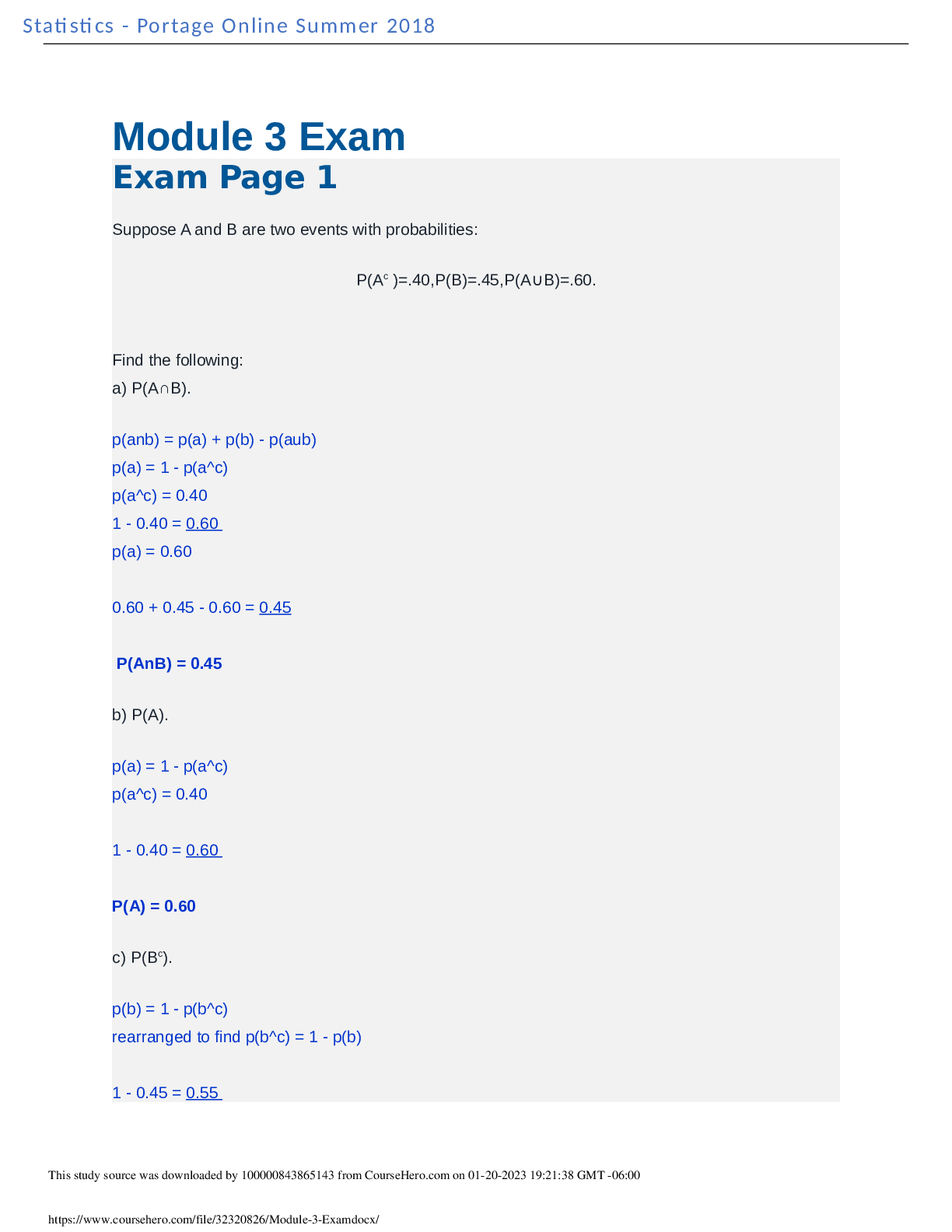
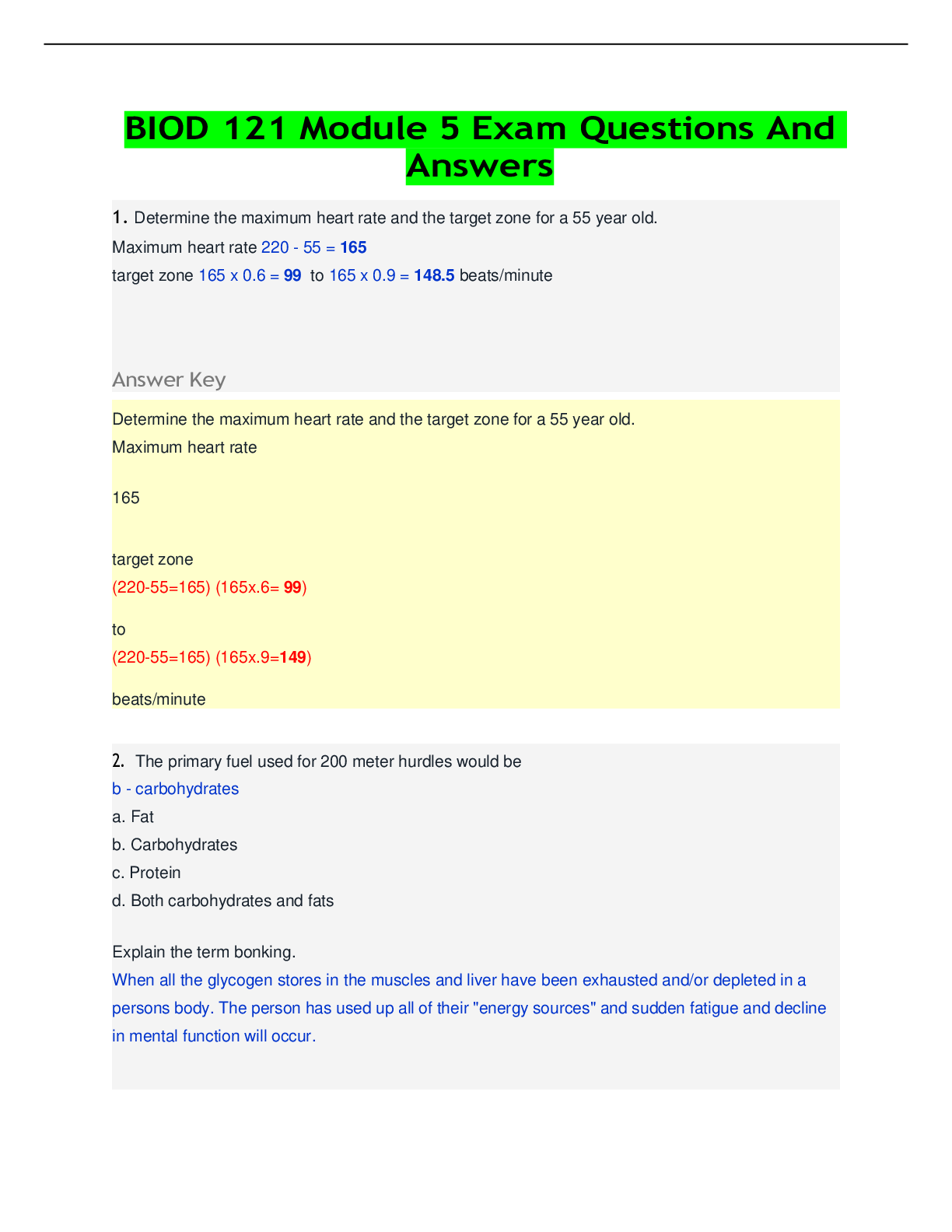

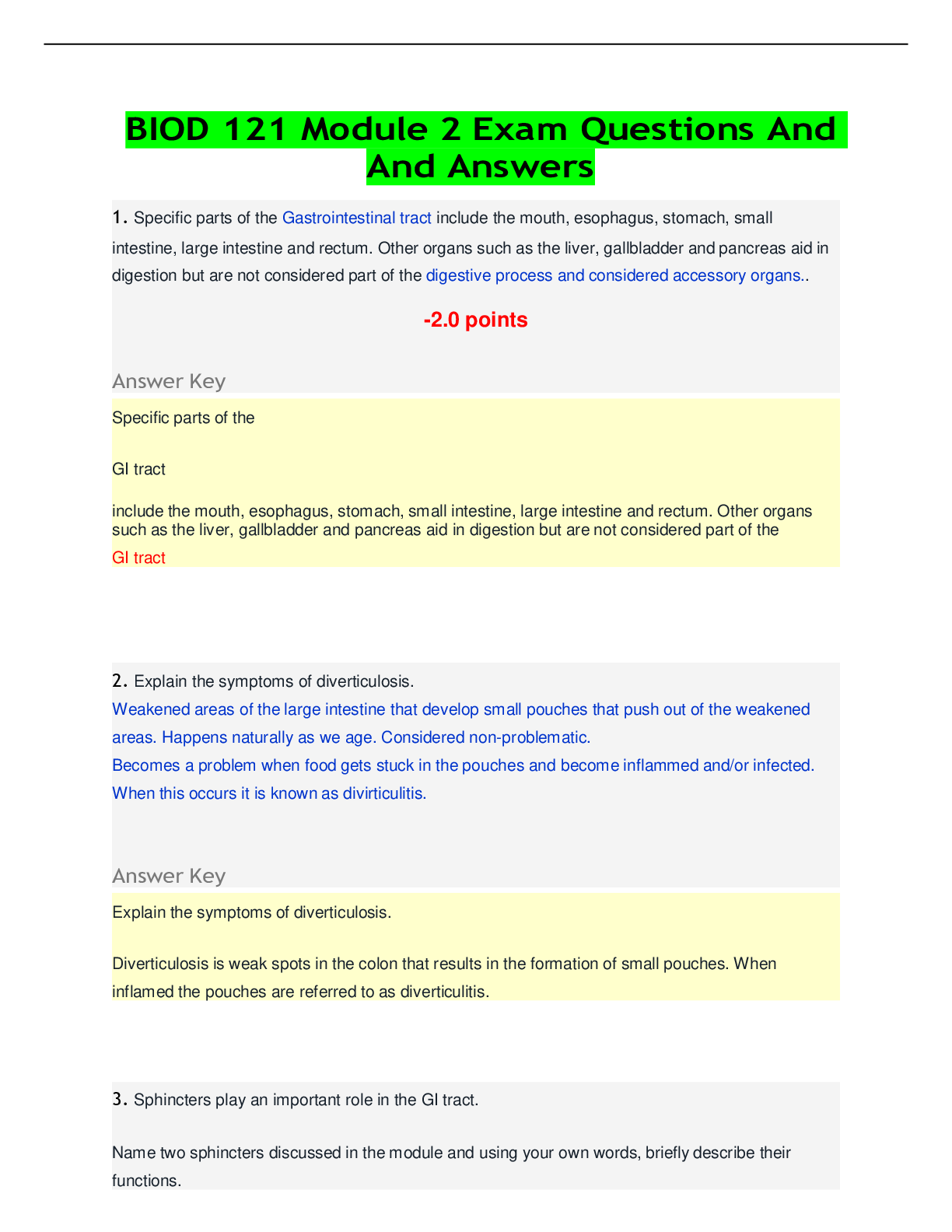

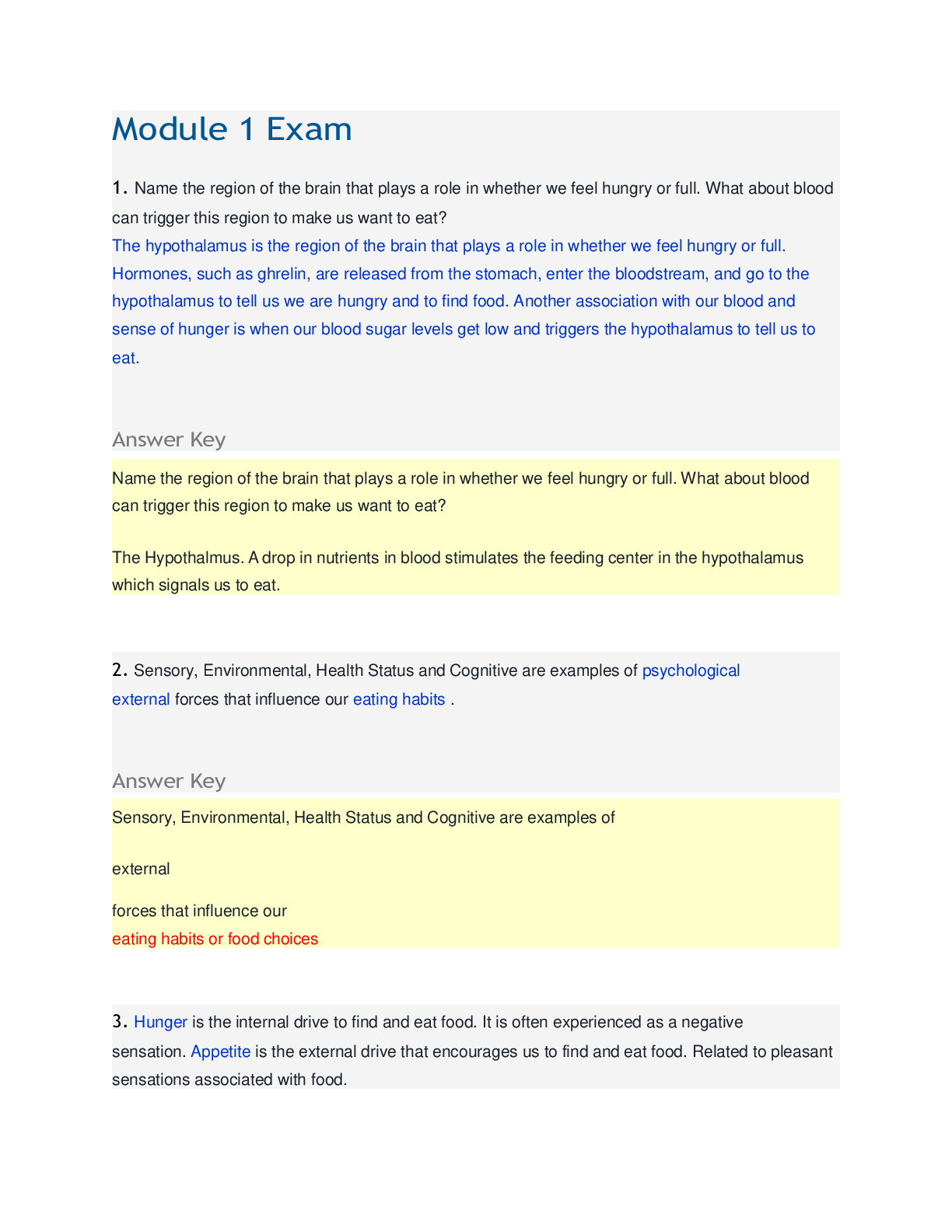
 (1).png)
 (1).png)
 (1).png)
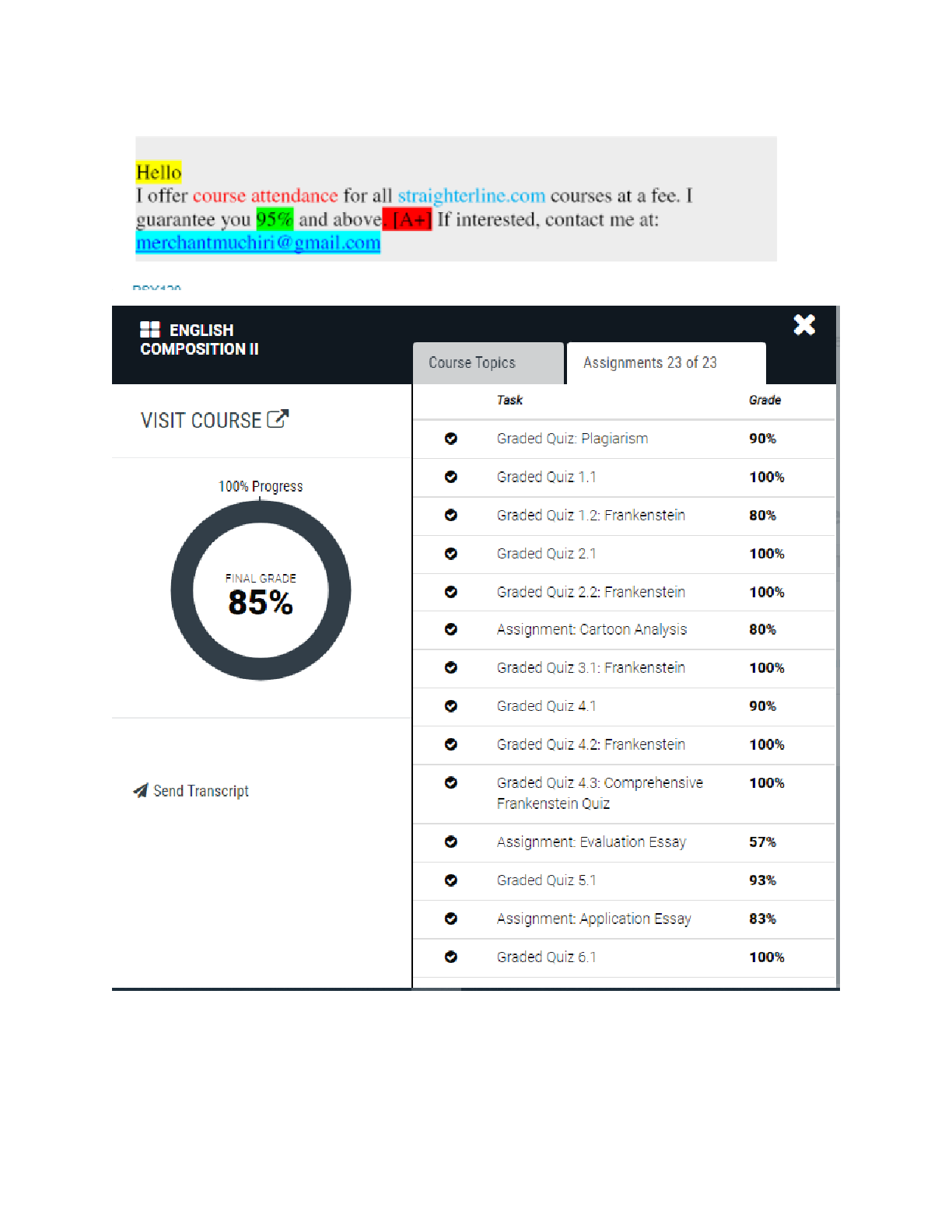
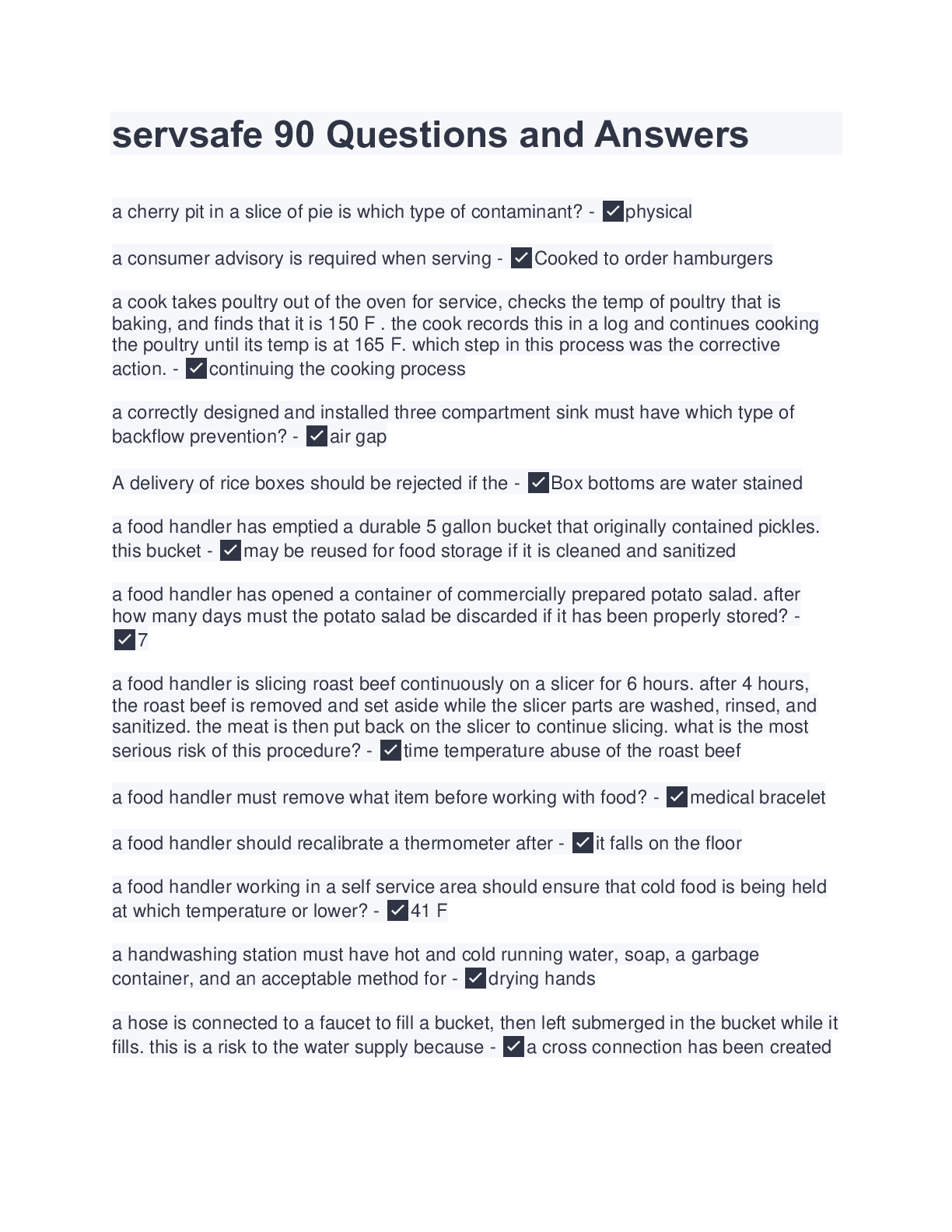
.png)


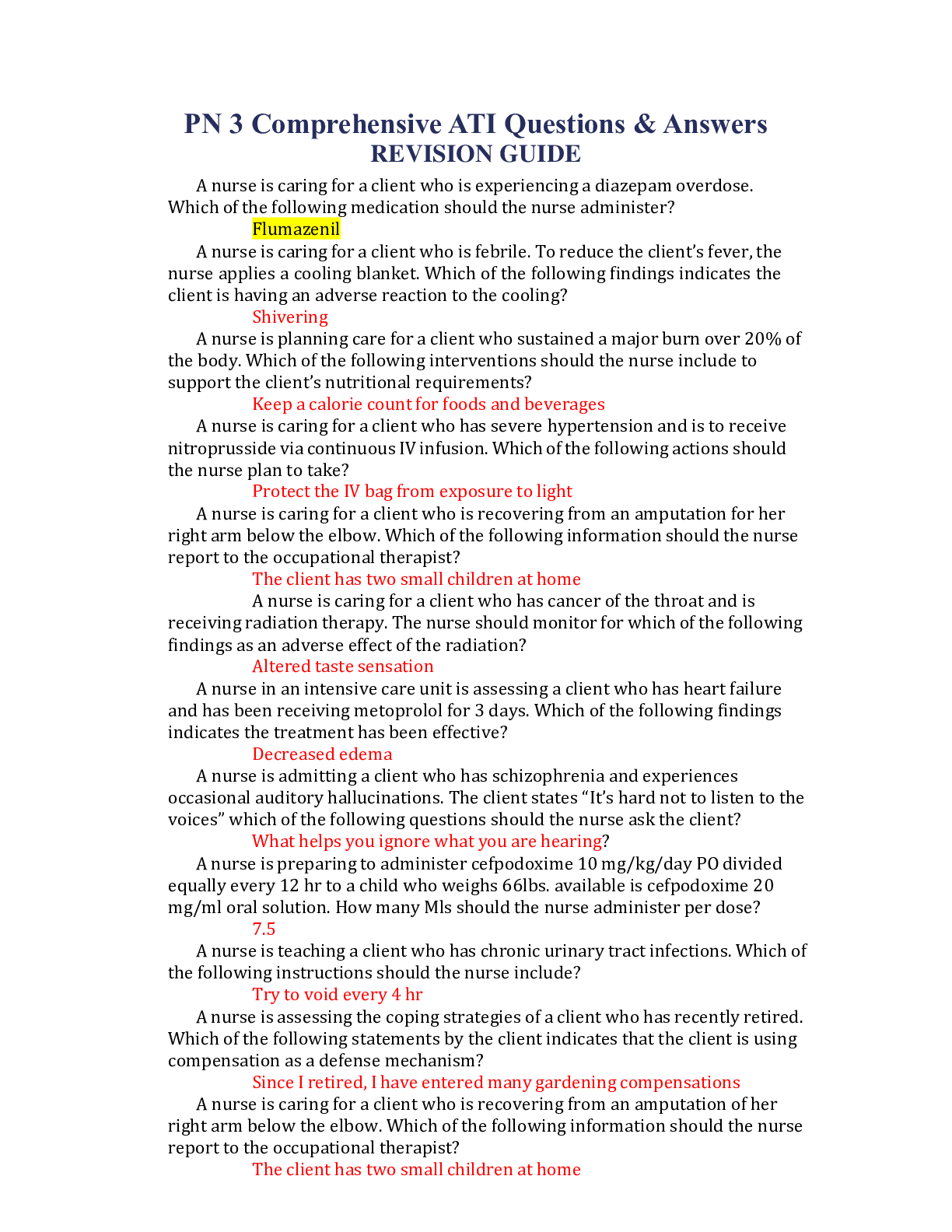

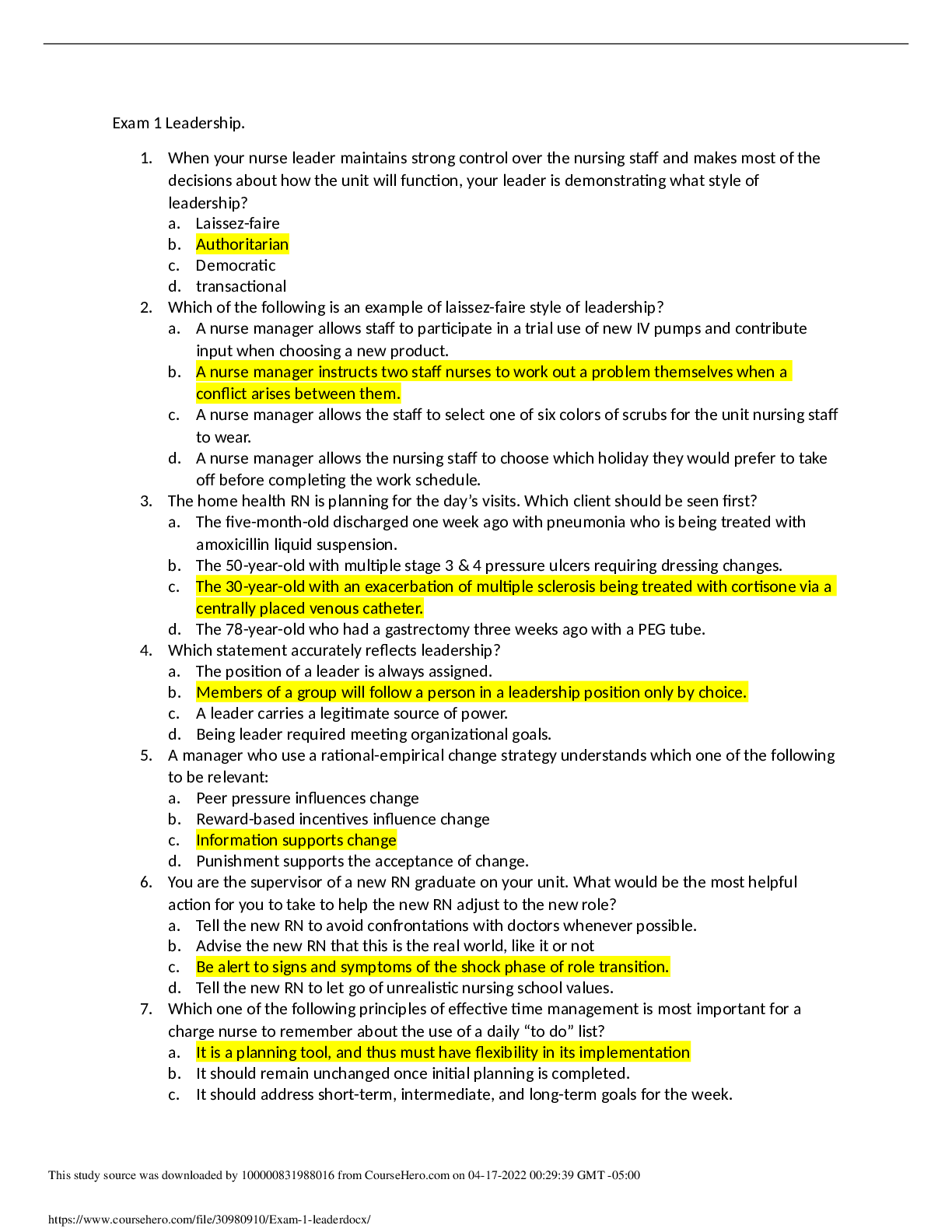

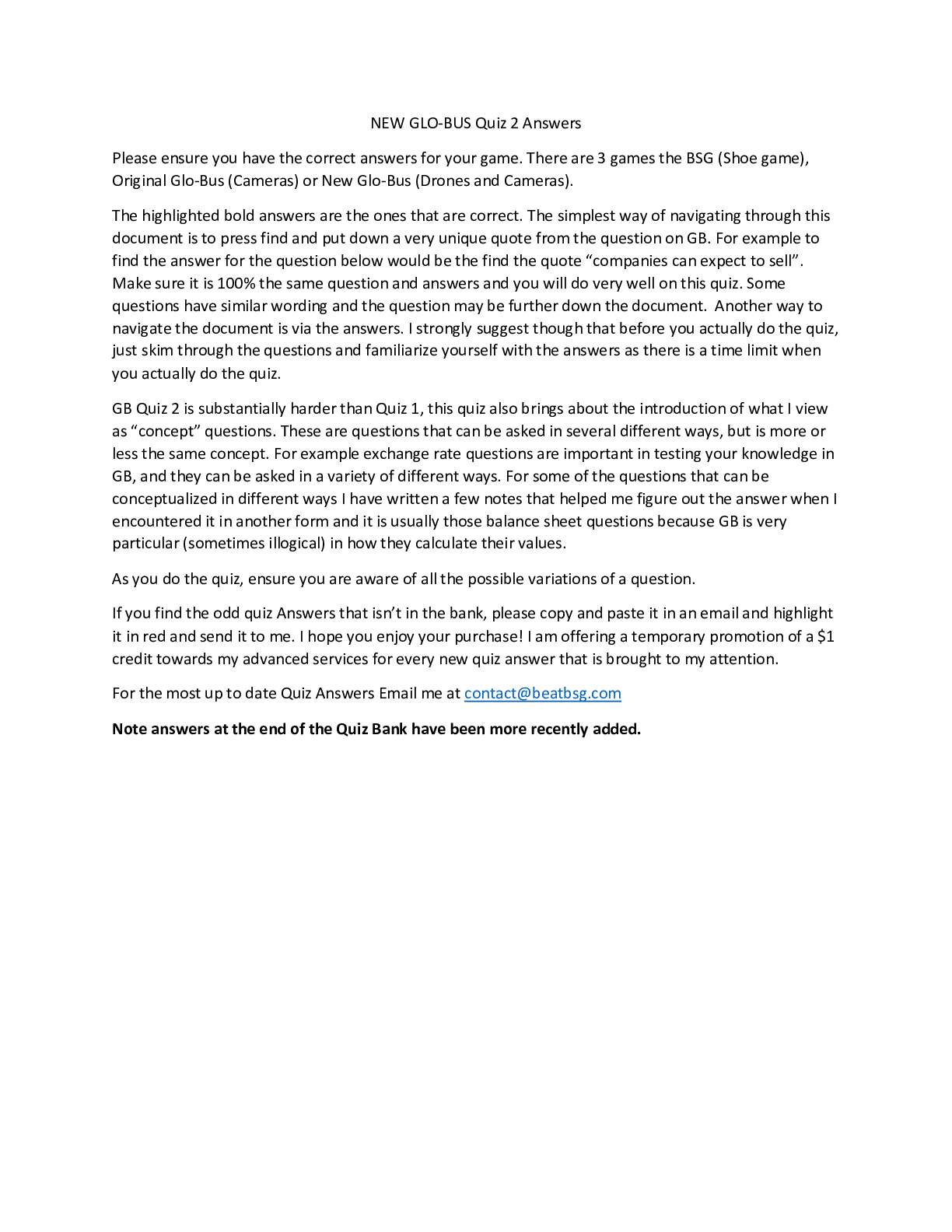
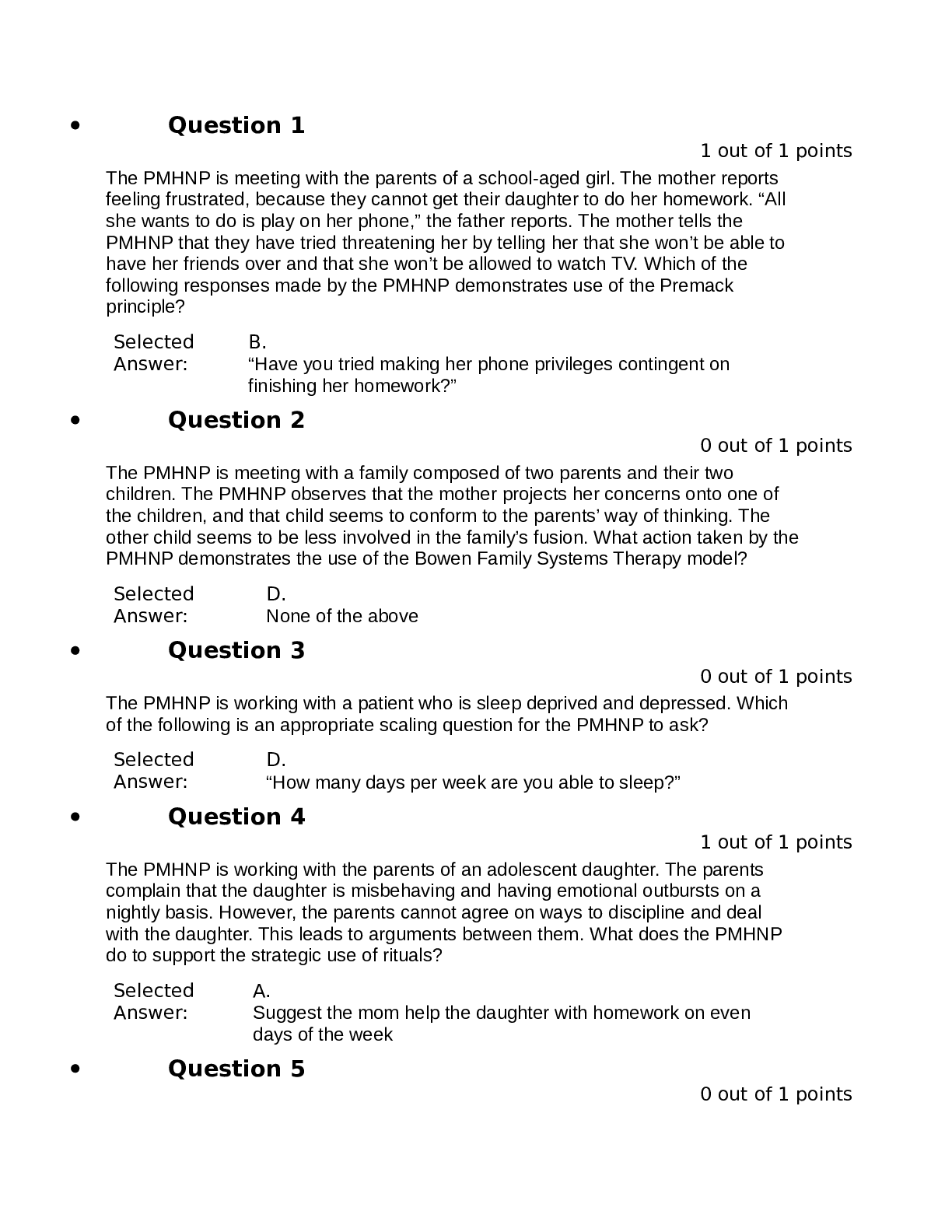

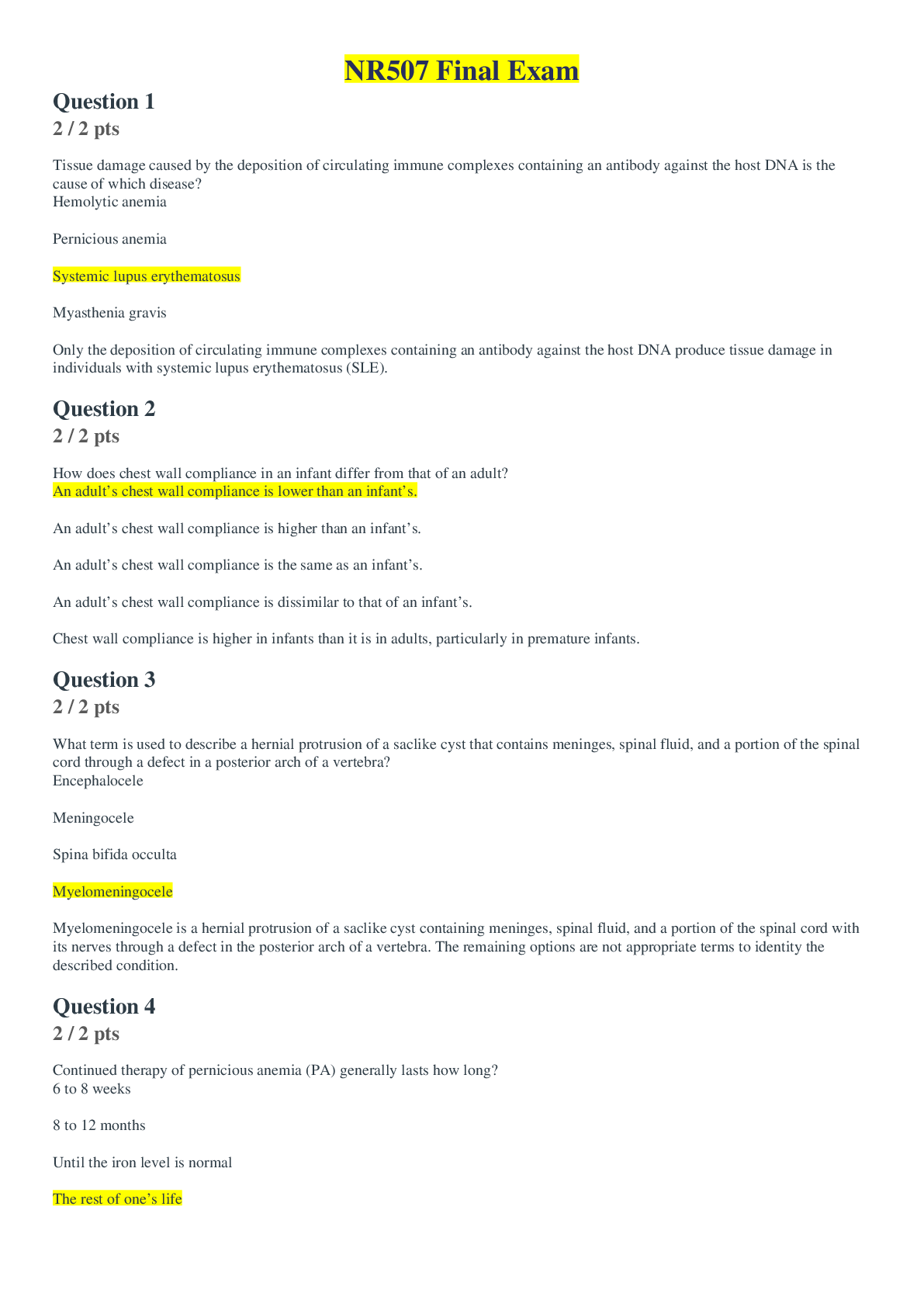


 (1).png)
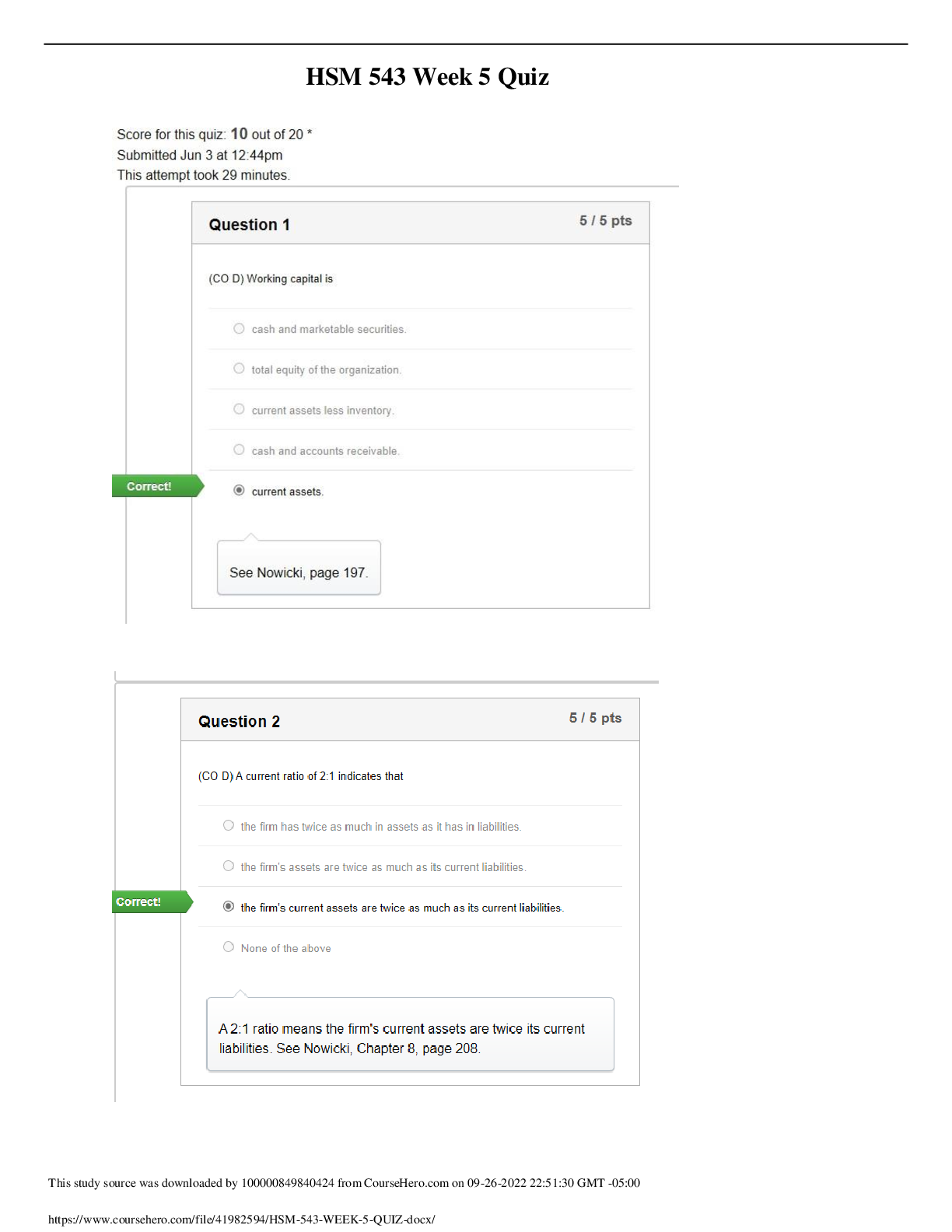
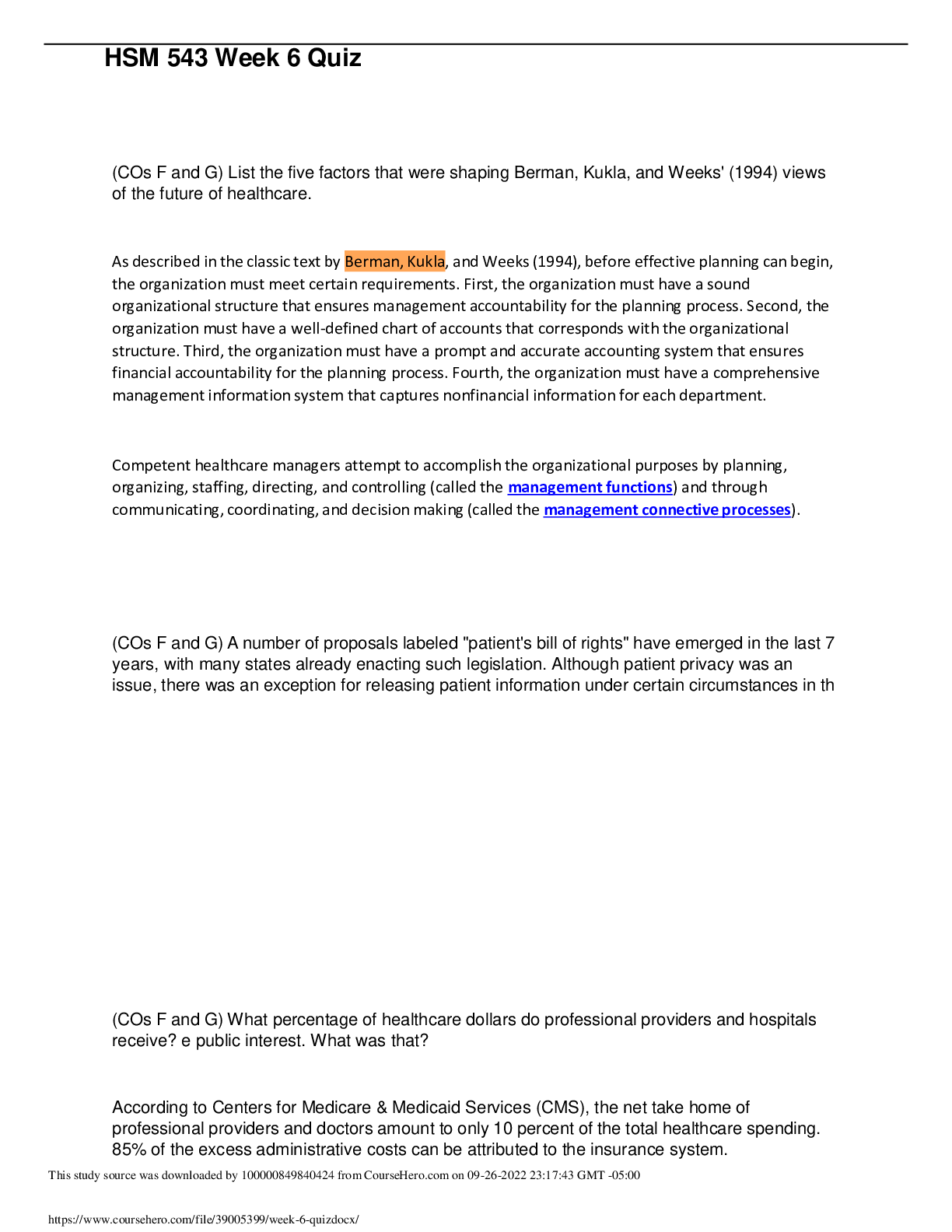
.png)


